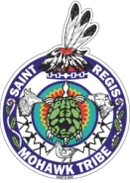-
Community & Family Services
- Care Management Program
- Child Support Enforcement Unit
- Family Support
- HCBS Waiver
- Home Improvement Supplement Program (HIP)
- Homeowner's Assistance Fund
- Individual Residential Alternatives (IRA)
- Individual Supports and Services (ISS) - Housing Subsidy Program
- Office of the Family Advocate
- Three Sisters Program
- Tribal Vocational Rehabilitation (TVR)
- Community Partnership Fund
- Economic Development
- Education
- Environment
- Executive Director's Office
- Finance
- Generations Park
- Grants & Contracts
-
Health Services
- A/CDP Outpatient
- A/CDP Prevention
- Partridge House (Inpatient)
- Ronthahiiohsthá:ke Clubhouse
- Business Office
- Centering Pregnancy
- Dental Clinic
- Health Promotion and Planning
- Laboratory
- Let's Get Healthy - Diabetes Center for Excellence
- Medical Clinic
- Mental Health - Kanikonri:ihne (Good Mind Counseling)
- Outreach Chronic Care Nursing
- Pharmacy
- School-Based Health Center
- Home Improvement Supplement Program (HIP)
- Human Resources
- Office for the Aging
- Office of Emergency Management and Safety
- Planning and Infrastructure
- Social Services Division
- Tribal Historic Preservation Office
- Tribal Police
PCB's are one of the primary contaminants of concern in the St. Lawrence River watershed and have been measured in high concentrations in numerous environmental samples in the area, including soil (US EPA 2007).
PCBs are a group of 209 chlorinated hydrocarbon chemicals (individually known as PCB congeners). These chemicals were produced from the 1930s until their production was banned in the United States by the U.S. Environmental Protection Agency in 1979, and were ultimately phased out of use by 1985, except in cases where they were totally enclosed (US EPA 1979). Because of their chemical stability at high temperatures, PCBs were used primarily as insulating materials for electrical transformers and capacitors, but were also used in such diverse products as paints and carbon copy paper. Their chemical stability has also contributed to their persistence in the environment.
PCBs are relatively mobile in the environment in that they can be volatilized and transported in the atmosphere, resulting in their presence in animal tissues and environmental media around the world (Eisler 2000).
Over the past forty years, General Motors, Reynolds Metals Company, and the Aluminum Company of America (ALCOA), on the American banks of the St. Lawrence River, have economically thrived from the low-cost electricity produced by the hydro-electric project. In the process, Akwesasne, the first community down-river from Robert Moses, has born a disproportionate share of environmental, socio-cultural and economic impacts resulting from pollution from these industries.
REPORTS:
Investigation of Household Dust for Dioxins and Dioxin-like Chemicals in Akwesasne (Click here for article)

